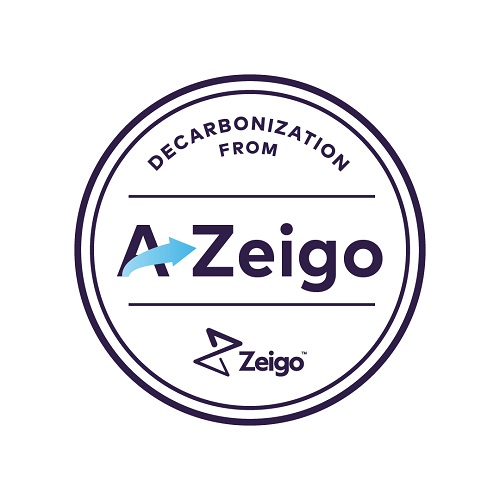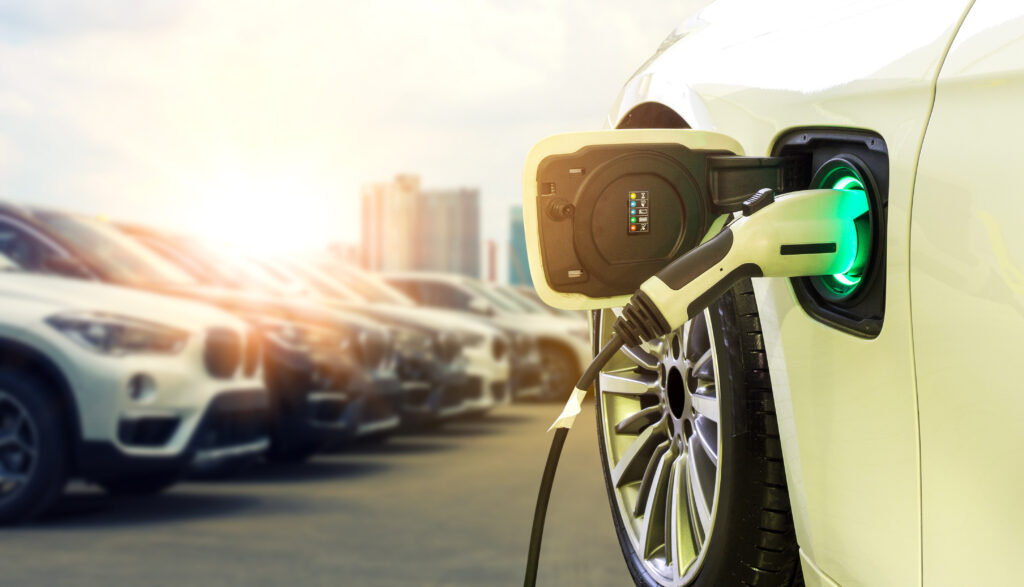“From A to Zeigo” Blog Series
Decarbonization is complicated. Whether it’s figuring out where to start, deciding which tactics to employ, or keeping up with the latest trends and new technologies, there’s a lot to learn. We’re here to help you untangle the “alphabet soup” of decarbonization. Subscribe to our newsletter to make sure you never miss an article.

How do I start? Understanding the Four Pillars of Decarbonization
Decarbonization has become a critical issue for companies worldwide. As businesses aim to reduce their carbon footprint and address the challenges of climate change, many Fortune 500 companies prioritize rapid, deep emissions reductions to achieve their near and long-term targets.
Decarbonization is not only essential for businesses to remain relevant and competitive, but it also enhances a brand’s reputation and appeals to customers and investors who prioritize sustainability. With policymakers and governments enforcing stricter oversight into climate and ESG disclosures, decarbonization is becoming a fundamental requirement for businesses. Additionally, purpose-driven companies attract top talent as employees want to work for organizations with a strong commitment to sustainability.
Sustainability offers a whole range of benefits for businesses, and decarbonization is a powerful business strategy to enable profitability and growth. However, just knowing carbon emissions isn’t enough; companies must take real action and demonstrate progress to their stakeholders.
How do I start?
Numerous solutions already exist, or are under development, with significant potential to revolutionize how companies approach decarbonization. After establishing a baseline and setting targets, the next crucial step for organizations is to implement a program of climate action that reduces emissions. The sustainability software industry is burgeoning with solutions designed to help companies track their carbon emissions and achieve their goals. However, merely understanding one’s carbon emissions is insufficient. Real action must be taken to demonstrate progress to your stakeholders.
Pillar 1: Collect data and adopt software to track emissions

Decarbonization software sets itself apart from conventional sustainability or ESG software by its ability to catalyze action. By empowering businesses to make data-driven decisions, it leads to more efficient and cost-effective sustainability actions.
With advancements like the use of AI, large language models like ChatGPT, and machine learning technologies, we can process, organize, and analyze data faster, more accurately, and more efficiently than ever before. The automation and speed that software and digital tools deliver will be essential in scaling the progress we make on decarbonization.
Data is at the heart of everything we do, and accurate data is the foundation for understanding carbon emissions, identifying opportunities for reduction, and tracking progress toward sustainability goals.
Decarbonization software enables companies to collect, analyze, and visualize this data in an actionable way. It provides insights into where emissions originate, which processes are the most carbon-intensive, and where the most significant impact can be made. However, it also takes it one step further by using data to recommend actions to reduce emissions and suggest projects to get closer to your goal.
Pillar 2: Become more efficient with your energy use
One of the most economical and straightforward methods of decreasing your carbon footprint and helping you save money while battling climate change is energy efficiency. Not only does embracing innovative, efficient technology provide a competitive advantage and reduce costs to your bottom line, but it also ensures that energy-related services use and lose less energy. Energy-efficient devices are also excellent at reducing the energy lost during the conversion process.
While capital-intensive at times, energy-efficient technologies usually result in net savings in the long run. Upgrades in heating and cooling systems and lighting aren’t the only strategies for reducing energy consumption. Making buildings more efficient while still providing occupants with a comfortable atmosphere can lead to significant savings in the long run.
Energy efficiency initiatives are often referred to as “win-win” because they save money for businesses while also having a positive impact on the environment. For example, optimized efficiency in manufacturing facilities leads to reduced energy consumption while producing goods, resulting in lower energy bills and reduced demand on the grid. Commercial buildings waste an enormous amount of energy, but many energy efficiency projects are simple to undertake, making energy efficiency a critical component of any decarbonization strategy.
Pillar 3: Electrify as many of your operations as possible

One method for achieving decarbonization is through electrification, which involves replacing traditional fossil fuel-based energy sources like coal, oil, and natural gas with electricity. Organizations can transition to electric-powered vehicles, deploy heat pumps, and convert thermal-sourced industrial process equipment and heating and cooling systems to electric wherever possible. Electric vehicles are the next frontier in energy and carbon management, with most manufacturers developing or producing models. EV sales are projected to reach $8.8 trillion by 2030 and $57 trillion by 2050.
While renewable adoption has predominantly focused on decarbonizing the power system to date, there’s a large opportunity to apply low and zero-carbon thermal technologies. Research by the Renewable Thermal Collective indicates that there’s significant energy to be saved by electrifying low to medium temperature processes with cost-competitive technologies such as heat pumps and electric steam boilers and deploying other electric resistance technologies in medium to high temperature processes.
Electrification helps reduce dependence on fossil fuels, which can help minimize exposure to energy price volatility. Additionally, when electricity comes from renewable sources such as wind or solar, it provides businesses with a cleaner and more resilient energy supply, aiding in their overall decarbonization efforts.
Pillar 4: Adopt renewables to address necessary energy usage
Once optimized, remaining energy sources can be replaced with lower emission fuels and technologies, like wind or solar for electricity and electrification and/or clean fuels like renewable natural gas or hydrogen for transport and heating.
The most common mechanisms today for renewable electricity procurement are onsite generation (predominantly from solar photovoltaic), offsite generation via power purchase agreement (PPA), and Energy Attribute Certificates (EACs). Most companies use a blend of these technologies—increasingly paired with other cleantech—to ramp toward their Scope 2 goals.
Organizations that adopt this strategy can benefit from a cleaner, more resilient energy supply that accelerates their decarbonization objectives while reducing exposure to energy price volatility.

The Bottom Line
Decarbonization is not just about environmental responsibility; it is also a smart business decision. It enhances efficiency, saves money, and attracts eco-conscious investors and customers. Investing in the proper decarbonization software at the beginning of your journey is a cost-effective method of tracking and achieving tangible progress toward carbon reduction objectives and empowering teams to take action.
Start by simplifying the process and focusing on taking one step at a time. Set a goal that aligns with your business objectives, and then identify a project that makes sense based on budget, resources, and priorities. Each project brings you closer to your target, but without a reliable tracking mechanism, it will be difficult to measure your progress. So don’t overlook the importance of having an intuitive software solution that makes your data visible. Your data can then serve as a compass, providing you with a better understanding of your starting point and whether you’re on track to achieve your goals.
